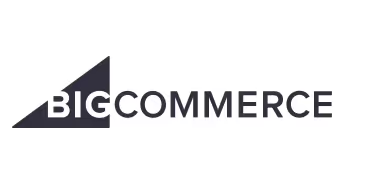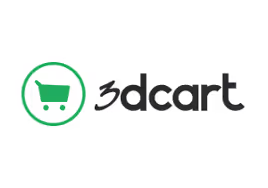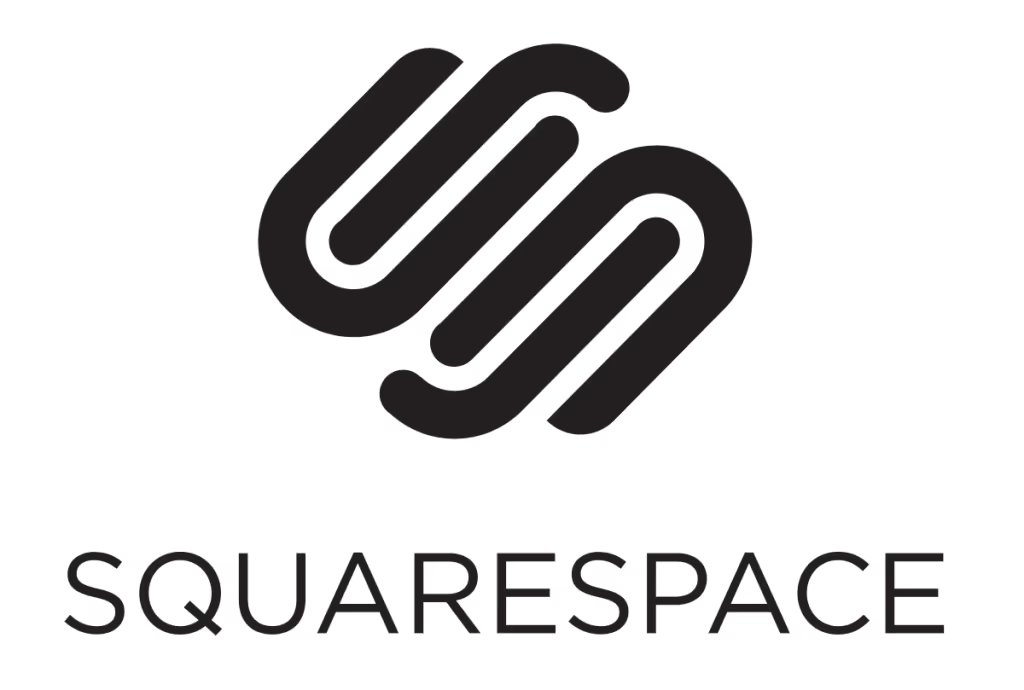Eine Wand in Ihrem Haus muss gestrichen werden. Welche Farbe wählen Sie? Die beliebteste? Der mit der billigsten Farbe? Keine einzelne Farbe ist objektiv besser als jede andere. Die beste Wahl hängt von Ihren persönlichen Vorlieben ab und davon, wofür der Raum genutzt wird. Hellere Farben sind möglicherweise besser für Erholungsbereiche, dunklere Töne für Hauswirtschaftsräume, die verschmutzen könnten usw. Für E-Commerce-Plattformen ist es dasselbe: Es gibt keine am besten E-Commerce-Plattform, nur die beste für Sie.
Im Folgenden überprüfen wir die 11 wichtigsten E-Commerce-Plattformen und erklären, was an ihnen funktioniert, was nicht und für welche Arten von Online-Shops sie am besten geeignet sind. Schauen Sie sich kurz an, welche mit Ihrer Markenpersönlichkeit und Ihrem Geschäftsmodell übereinstimmen.
1. Shopify

Beginnen wir mit einem der gebräuchlichsten Namen, wenn es um die besten E-Commerce-Plattformen des Jahres 2026 geht: Shopify. Mit seinem Site-Builder im Vorlagenstil ermöglicht Shopify praktisch jedem, einen Online-Shop zu entwerfen und zu verwalten, auch solchen, die absolut keine Erfahrung im Webdesign haben.
Da Shopify nur Onlineshops hostet, verfügen sie über eine der gewissenhaftesten Funktionen für den E-Commerce, darunter Ein-Klick-Upsells, intrinsische Bewertungssysteme und Apps zum einfachen Hinzufügen von Dropshipping-Produkten.
Es gibt jedoch einen großen Nachteil. Das gleiche Design im Vorlagenstil, das es Anfängern leicht macht, schränkt auch die Kreativität fortgeschrittener Benutzer ein. Der Site Builder von Shopify ist starr, und sobald Sie Ihr Thema ausgewählt haben, sind die meisten Ihrer Designentscheidungen bereits getroffen. Wenn die Anpassung und das Erreichen bestimmter „Looks“ oberste Priorität haben, ist Shopify möglicherweise zu einschränkend.
Preisgestaltung:
Shopify bietet eine Reihe von Preispaketen für jeden Geschmack E-Commerce-Typen, von kleinen Wochenendverkäufern bis hin zu globalen Einzelhandelsunternehmen. Die verschiedenen Pakete legen fest, wie viel Sie an Kreditkartengebühren und 3P-Gebühren für das Payment Gateway zahlen. Wenn Sie also ein erfolgreicher Shop mit einem günstigeren Paket sind, verlieren Sie möglicherweise mehr Geld.
- Shopify Lite: 9$ pro Monat
- Basic Shopify: 29 USD pro Monat
- Shopify: 79$ pro Monat
- Advanced Shopify: 299 USD pro Monat
- Shopify Plus: 2.000 bis 40.000 US-Dollar pro Monat
Vorteile:
- Benutzerfreundliche Oberfläche für Personen ohne Designerfahrung.
- Mit dem einfachen Design im Vorlagenstil können Sie Ihre Website im Handumdrehen zum Laufen bringen.
- Hosting inklusive.
- Integrierte E-Commerce-Funktionen.
- Der praktische App Store bietet zusätzliche Funktionen.
Nachteile:
- Sehr eingeschränkte Anpassungsmöglichkeiten hemmen die Kreativität.
- Benötigt zusätzliche Maßnahmen, um aufzufallen, sonst sieht Ihre Website generisch aus.
- Je nachdem, für welchen Tarif und welches Gateway Sie sich entscheiden, zahlen Sie möglicherweise zu viele Transaktionsgebühren.
Endgültiges Urteil:
Shopify ist großartig, wenn Sie eine wartungsarme E-Commerce-Website suchen. Es ist wahrscheinlich die einfachste und bequemste E-Commerce-Plattform auf dieser Liste. Wenn Branding und Seitendesign jedoch oberste Priorität haben, wählen Sie eine Plattform mit mehr Anpassungsmöglichkeiten. Mache außerdem die Mathematik am wie viel Shopify dich kosten wird — Der Wert des Preises hängt sowohl vom Plan als auch davon ab, wie viel Sie verkaufen.
2. Großer Handel

Als E-Commerce-Plattform für große Marken, Unternehmen und Startups, die eine schnelle Expansion planen, macht BigCommerce seinem Namen alle Ehre. Obwohl sie ihr Bestes geben, um Website-Designern zum ersten Mal gerecht zu werden, ist ihre Benutzeroberfläche komplexer als bei anderen Plattformen und beinhaltet eine steilere Lernkurve. Das ist jedoch nicht unbedingt ein Nachteil — die komplexere Oberfläche unterstützt mehr Designfunktionen und Anpassungsoptionen.
Preisgestaltung:
Die meisten Funktionen sind in allen Preisplänen verfügbar. Nur die erweiterten Funktionen wie API-Unterstützung, benutzerdefiniertes SSL und Google-Kundenrezensionen sind exklusiv für die Top-Tarife verfügbar.
- BigCommerce Standard: 29,95 USD pro Monat
- BigCommerce Plus: 79,95 USD pro Monat
- BigCommerce Pro: 249,95 USD pro Monat
- BigCommerce Enterprise: benutzerdefiniert
Vorteile:
- Keine Transaktionsgebühren.
- Bietet Platz für Geschäfte aller Größen.
- Hosting inklusive.
- Ideal für große Geschäfte und für die Skalierung nach oben.
Nachteile:
- Steile Lernkurve für die Verwendung des Site-Editors.
- Ein komplizierter Site-Builder könnte Designer einschüchtern, die zum ersten Mal arbeiten.
- Kein Ein-Klick-Verkauf.
Endgültiges Urteil:
BigCommerce eignet sich am besten für Marken, die in großen Maßstäben denken. Dazu gehören nicht nur bereits etablierte E-Commerce-Websites, sondern auch Startups mit viel Kapital oder Marken mit einem narrensicheren Geschäftsmodell. Wenn Sie planen, dass Ihr Geschäft in naher Zukunft an Bedeutung gewinnen wird, sollten Sie diese Plattform in Betracht ziehen.
3. WooCommerce

Eine der größten E-Commerce-Plattformen des Jahres 2026 ist überhaupt keine E-Commerce-Plattform. WooCommerce ist eigentlich nur ein WordPress-Plugin, das E-Commerce-Funktionen wie Checkout und Produktseiten ermöglicht. Das klingt vielleicht nicht nach viel, hat aber enorme Auswirkungen: Ladenbesitzer können die gesamte beeindruckende Plugin-Bibliothek von WordPress verwenden, um ihre E-Commerce-Website zu gestalten!
WooCommerce nutzt über WordPress den Komfort und die Benutzerfreundlichkeit von Site-Buildern im Vorlagenstil und kombiniert sie mit nahezu endlosen Optionen für Designfunktionen aus der Plugin-Bibliothek. Und weil es WordPress ist, eignen sich WooCommerce-Websites am besten zum Bloggen, wenn Content Marketing ein wichtiger Bestandteil Ihres Geschäftsplans ist.
Preisgestaltung:
Technisch gesehen ist WooCommerce kostenlos... aber freuen Sie sich nicht. Du musst trotzdem für das Hosting selbst bezahlen, da es nicht in WordPress enthalten ist, ganz zu schweigen davon, wie viel du für benutzerdefinierte Themes und Designer-Plugins ausgibst.
Vorteile:
- Alle Funktionen von WordPress, die für E-Commerce verfügbar sind, einschließlich der riesigen Community von 3P-Plugins.
- Wie bei Shopify können Sie Access-Plugins für die einfache Einbindung von Dropshipping-Waren.
- Skalierbarer Preis.
- Beste E-Commerce-Plattform zum Bloggen.
Nachteile:
- Hochwertige Plugins kosten in der Regel mehr, daher müssen Sie vorsichtig sein, wenn Sie etwas ausgeben.
- Hosting nicht enthalten.
Endgültiges Urteil:
Wenn Sie bereits mit dem Designen mit WordPress vertraut sind, werden Sie WooCommerce intuitiv und einfach finden. Andernfalls kann es etwas gewöhnungsbedürftig sein. Viele halten WooCommerce für eine günstige E-Commerce-Plattform, aber all diese Plugin- und Theme-Käufe summieren sich. Kalkulieren Sie also, wie viel die gewünschte Website kosten würde, bevor Sie sie endgültig erstellen.
4. 3D-Karte

Lass dich nicht vom Namen übertreiben. Die 3 Ds in „3dcart“ beziehen sich auf die drei Dimensionen des E-Commerce: Suchmaschinen, Käufer und Ladenbesitzer (... vielleicht sollte es „3“ sein S Einkaufswagen?“). Während Käufer und Ladenbesitzer für alle führenden E-Commerce-Plattformen oberste Priorität haben, ist es diese erste Dimension, die Suchmaschinen, die 3dcart von den anderen unterscheidet.
Viele Benutzer von 3dcart halten es für die beste E-Commerce-Plattform für SEO. Unabhängig davon hat 3dcart neben SEO, das es auf diese Liste gebracht hat, noch viel zu bieten, z. B. die Vielzahl der Funktionen oder die Tatsache, dass für keinen Preisplan Transaktionsgebühren anfallen.
Preis:
Die Preise sind in 4 verschiedene Preispläne unterteilt, aber die meisten Vorteile von 3dcart sind bei allen verfügbar. Jeder Plan beinhaltet eine unbegrenzte Anzahl von Produkten, keine Transaktionsgebühren, technischen Support rund um die Uhr, sicheres Hosting, unbegrenzte Bandbreite und API-Zugriff. Höhere Tarife ermöglichen jedoch mehr Mitarbeiter sowie den Zugriff auf exklusive Funktionen wie Vorbestellungen, Tagesangebote und E-Mail-Marketing-Integrationen. (Die unten angegebenen Preise gelten für die monatlichen Zahlungspläne.)
- Startup Store: 19 USD pro Monat
- Basic Store: 29$ pro Monat
- Plus Store: 79 USD pro Monat
- Pro Store: 229 USD pro Monat
Vorteile:
- Keine Transaktionsgebühren.
- Unzählige Funktionen; eine der besten E-Commerce-Plattformen für Funktionen
- Unbegrenzte Produktangebote, auch mit Anfängerplänen
- Hosting inklusive
Nachteile:
- Designvorlagen und Optionen wirken glanzlos und altmodisch, insbesondere im Vergleich zu den anderen Top-E-Commerce-Plattformen
- Benutzer melden jedes Mal Kundenfehler, wenn 3dcart aktualisiert wird.
Endgültiges Urteil:
3dcart lässt sich am besten mit Shopify vergleichen. Einerseits sind die Vorlagen und Designoptionen von 3dcart noch schlechter als die von Shopify, für das Design ebenfalls eine Schwäche ist. Auf der anderen Seite bietet 3dcart mehr zusätzliche Funktionen als Shopify. Also nochmal, wenn Design Ihre oberste Priorität ist, schauen Sie woanders hin. Wenn Sie nur E-Commerce-Funktionen wünschen und Shopify nicht ausreicht, ist 3dcart perfekt für Sie.
5. Quadratischer Raum

Squarespace ist als DIY-Site-Builder für jede Branche bekannt und genauso auf die Website einer Anwaltskanzlei abgestimmt wie ein Online-Shop. In den letzten Jahren hat das Unternehmen jedoch mehr in seine E-Commerce-Funktionen investiert, genug, um sie auf unsere Liste der besten E-Commerce-Plattformen für 2026 zu setzen.
Wie WooCommerce gewährt Squarespace Online-Shops Zugriff auf alle seine (preisgekrönten) Designtools und Vorlagen. Das bedeutet, dass Sie eine E-Commerce-Website mit Elementen aus jeder anderen Branche erstellen können, sodass Sie Ihre Website anpassen und etwas völlig Einzigartiges erstellen können.
Preis:
Eine der größten Rollouts für Squarespace-Onlineshops ist die Hinzufügung von zwei Zahlungsplänen, die ausschließlich für den E-Commerce gelten. Bei keinem dieser Pläne wird zusätzlich zu anderen exklusiven Funktionen eine Transaktionsgebühr erhoben. Obwohl Sie die E-Commerce-Funktionen mit dem Business-Tarif weiterhin nutzen können, müssen Sie eine Transaktionsgebühr von 3% zahlen. Außerdem können Sie die meisten E-Commerce-Funktionen immer noch nicht nutzen. (Die unten angegebenen Preise gelten für die monatlichen Zahlungspläne.)
- Geschäft: 26 USD pro Monat
- Basic Commerce: 30 USD pro Monat
- Advanced Commerce: 46 USD pro Monat
Vorteile:
- Spektakuläre, erstklassige Designvorlagen.
- Eine der anpassbarsten E-Commerce-Plattformen.
- Hosting und unbegrenzte Bandbreite inklusive.
Nachteile:
- Viele grundlegende E-Commerce-Funktionen — wie Bewertungen und Rezensionen — müssen vorhanden sein manuell über 3P-Integrationen hinzugefügt.
- Akzeptiert nur zwei Zahlungsgateways, PayPal und Stripe, was Ihr Gebiet und Ihren Kundenstamm stark einschränken könnte.
Endgültiges Urteil:
Squarespace ist einer der beste Site-Builder für Ästhetik und Kreativität — E-Commerce-Site oder nicht. Wenn Erscheinungsbild und Branding oberste Priorität haben und WordPress/WooCommerce Ihnen nicht zusagt, ist Squarespace eine gute Wahl. Wenn Sie jedoch ausgefeilte Preisstrategien oder Marketingkampagnen haben, bietet die begrenzte Zusatzbibliothek von Squarespace möglicherweise nicht das, was Sie benötigen. Wir gehen davon aus, dass sie in Zukunft auch mehr E-Commerce-Funktionen veröffentlichen werden.
6. Wix

In the realm of DIY site-builders, Wix is a direct competitor to Squarespace. In ecommerce, however, they don’t invest quite as much as Squarespace. So what do they offer that the other best ecommerce platforms don’t? An automatically generated site via their Artificial Design Intelligence (ADI).
Wix ADI can auto-generate a working site within minutes. You input the industry you’re in and what style you want, and the AI does the rest of the work for you. You’re still free to edit and update the site as you wish, making this one of the fastest and most convenient ecommerce platforms for beginners.
Price:
Wix offers three different plans with ecommerce functionality. The difference in the top tiers is mostly in extra perks, such as more hours of videos or a professionally designed logo thrown in.
- Business Basic: $17 per month
- Business Unlimited: $25 per month
- Business VIP $35 per month
Pros:
- No transaction fees.
- AI-design for people who don’t want to design at all
- Great design options for DIY site building,
Cons:
- Limited ecommerce features
- AI-generated designs lack personalization
- Doesn’t scale well; only works for small stores
Final Verdict:
For ecommerce, Wix is essentially a lesser-version of Squarespace. You get a lot of the same customization and design options, but not as many ecommerce accommodations — and Squarespace doesn’t have that many to begin with.
But for people who don’t want to bother with site design at all, Wix is the ideal choice. Their main appeal in ecommerce is their ADI automatic site-builder. If speed and convenience are your top priorities, Wix is a good choice.
7. Big Cartel

Big Cartel is a specialist ecommerce platform for artists, craftspeople, and certain food vendors. For general ecommerce, it’s not an option, but if you’re selling in this particular fields, it could be your best choice.
From site design to pricing, everything Big Cartel offers targets small artisan brands. You’re assured affordable prices and a site design the emphasizes visuals.
Price:
All of Big Cartel’s pricing packages have the same suite of features. The only difference is the amount of listings you’re given: 25 for Platinum, 100 for Diamond, and 300 for Titanium.
- Platinum: $9.99 per month
- Diamond: $19.99 per month
- Titanium: $29.99 per month
Pros:
- Easy and convenient set up
- Visuals-based site design attuned for artists and craftspeople
- Comparatively cheap costs
Cons:
- Only available to select markets — not an option unless you’re in those markets
Final Verdict:
Big Cartel is a no-brainer; unless you’re in the market of homemade goods, it’s not worth it. If you are an artist or craftsperson, however, this could be the best platform for you, especially considering its low maintenance cost if you have under 25 products.
8. PrestaShop

PrestaShop is an open-source, cloud-based platform. Open-source is a big deal if you like to tinker with the code and make original, unlimited customizations — of course, you have to know what you’re doing under the hood. Because it’s open-source, that also means there’s a ready community of 3P apps for plenty of add-ons.
Price:
PrestaShop is free to download and use, as long as you know enough web development to set it up. In the future they’ll launch a paid service, PrestaShop Ready, for those of us who aren’t tech experts, but for now that’s still under development.
Pros:
- Very flexible — open source lets you do more than other platforms
- Large community of 3P apps and add-ons
- Free to download and use
Cons:
- Loading times are worse than other platforms
- Add-on purchases can add up
- Must have tech expertise to fully appreciate it
Final Verdict:
Do you know HTML and CSS? If yes, you may fall in love with how flexible PrestaShop is — you’ll be able to design the site the way you want, and enjoy that free-to-use pricetag.
If you don’t know code, though, you may find PrestaShop frustrating to use. Setting up your store may not be as easy or user-friendly as they’d have you believe, and there’s better DIY site-builders out there that don’t require tech skill.
9. Weebly

Weebly may not offer anything new in terms of design or ecommerce features, but what sets it apart from the other best ecommerce platforms is its marketing options. It’s other features are adequate enough, but if your main focus is marketing, Weebly offers more innate services than the other platforms: SEO, Lead Capture/Contact Forms, and Advanced Site Statistics.
Price:
Weebly has three different pricing plans for ecommerce. Although the Pro plan still offers the basic marketing features, the Business plan really opens up a lot of features: coupon codes, inventory management, gift cards, pop-ups, Facebook ad integration, and more detailed analytics. (Prices below are for the annual payment plans.)
- Pro: $12 per month
- Business: $25 per month
- Business Plus: $38 per month
Pro:
- Best for marketing integrations
- Great email tools
- While nothing special, their site design templates are more than adequate
Cons:
- Transaction fees can become unviable
- Holds back SEO efforts
Final Verdict:
Weebly is a very particular ecommerce platform. It offers a few marketing features that the other platforms don’t, so if those are important to you, Weebly could be a godsend. However, most ecommerce startups don’t prioritize marketing to such a degree, or at least are not ready to invest so much in marketing, and so Weebly won’t be a good choice for them.
10. Magento

Like BigCommerce, Magento targets large-scale and enterprise ecommerce brands. Unlike BigCommerce, however, Magento refuses to cater to smaller online stores. The result: an advanced (and expensive) ecommerce platform capable of handling the demands of corporate Goliaths like Nike or Procter & Gamble.
Magento is considered a “heavyweight” ecommerce platform; powerful, but out-of-the-league for small stores and startups. Expect a long learning curve and have a professional developer handy, but it leads to a huge payoff in terms of customization and design options.
Price:
Technically, the Magento Community Edition is free — you can download it and start to play around with it now with no cost. The Magento Enterprise Edition, though, is much, much more. How much, exactly, depends on the support package, such as Gold or Platinum, but those prices are kept under wraps unless you contact them directly. Still, expect upwards of $10,000 yearly — and you can triple that price if you hire a professional developer.
Pros:
- One of the best combinations of ecommerce features and design flexibility.
- Features fit for name brands and industry leaders.
- Tech-savvy site managers can use the impressive customization options.
Cons:
- Confusing interface with no sympathy for first-time designers.
- Often requires outside development and programming, making it even more expensive.
Final Verdict:
Magento is best left to the brands who are already dominating their market. True, it offers more than other ecommerce platforms, but those extras are mostly non-essential, so only the top brands really benefit from them. For small- and medium-sized stores, as well as startups, other ecommerce platforms are more forgiving.
11. Volusion

Somewhat of the runt of the litter, Volusion doesn’t offer as many features as the other top ecommerce platforms, nor is it as well-known. Despite that, it’s slowly improving its reputation by facilitating new users and small online stores.
With a drag-and-drop site editor and an intuitive dashboard, Volusion makes onboarding and setup as easy as possible. However, bigger ecommerce brands used to more advanced marketing strategies may find Volusion lacking.
Price:
With three fixed payment plans (and one custom plan for enterprises), Volusion is somewhat scalable to how much you expect to sell. The good news is that all plans come with no transaction fees and unlimited bandwidth. The bad news is that a lot of basic necessities, like SSL certificate, cost extra. (Prices below are for the monthly payment plans.)
- Personal: $29 per month
- Professional: $79 per month
- Business: $299 per month
Pros:
- No transaction fees.
- Unlimited bandwidth.
- Built-in capabilities for subscriptions and recurring payments.
Cons:
- Have to purchase your own SSL certificate.
- Can’t sell digital downloads.
- No intrinsic blogging capabilities.
Final Verdict:
Considering what Volusion offers against what it doesn’t offer, you see why it’s not more popular. However, if you’re a small ecommerce store using a subscription or recurring payment option, Volusion might be just right. It may not have the breadth of its rivals, but for subscriptions/recurring payments it’s one of the best ecommerce platforms.
Conclusion
If you’re considering dropshipping, some ecommerce platforms are better than others. Finding the right products from the right suppliers in the right areas can be cumbersome and time-consuming, but apps like Spocket make it a breeze. All you do is browse and click — all the research is already done for you.
You can download the Spocket for Shopify or for WooCommerce, so if dropshipping is integral to your business model, consider those platforms.





































